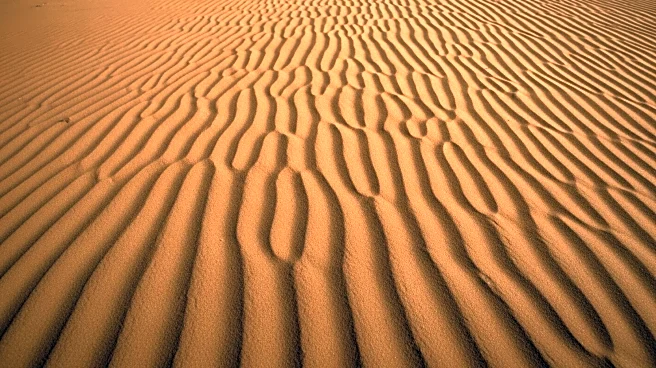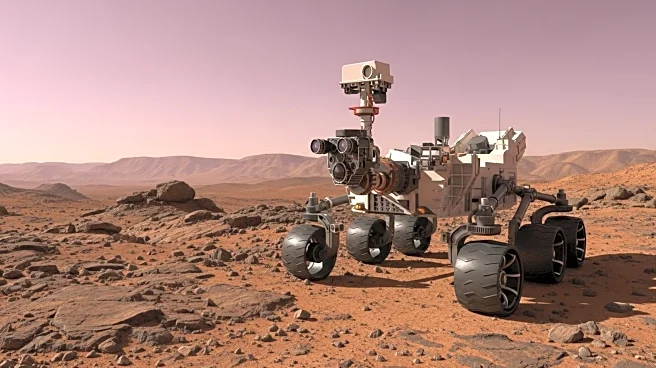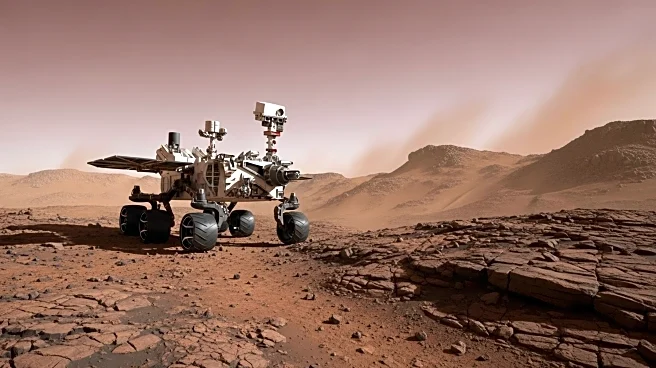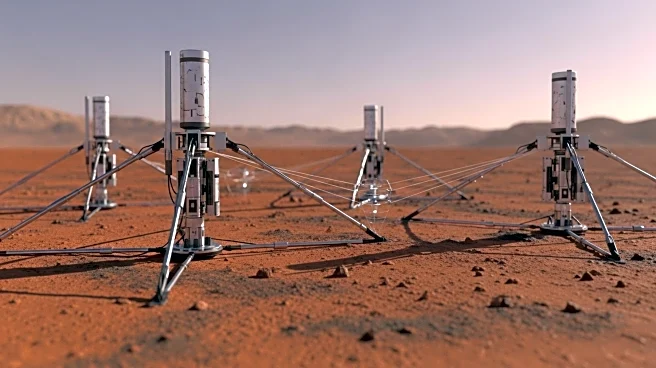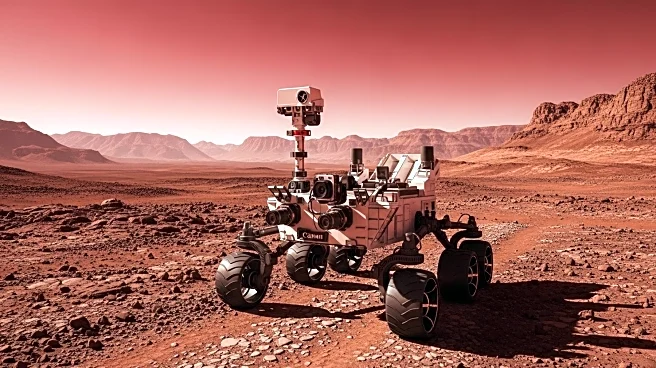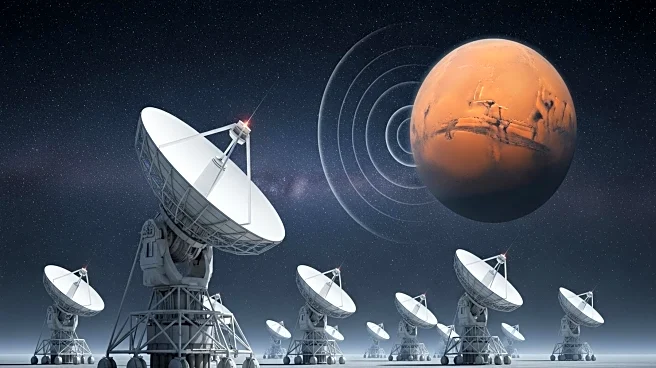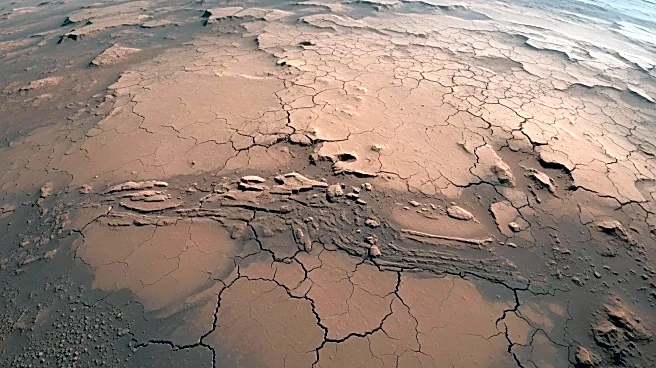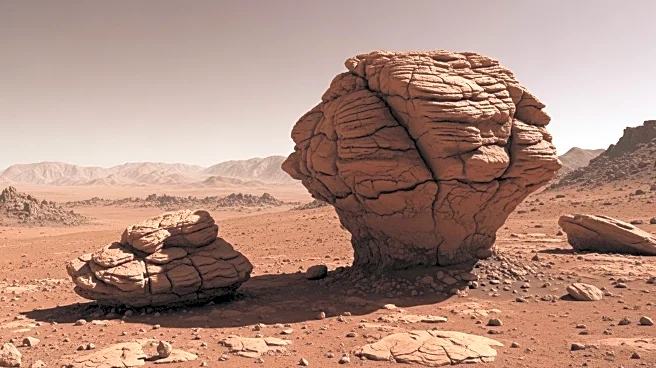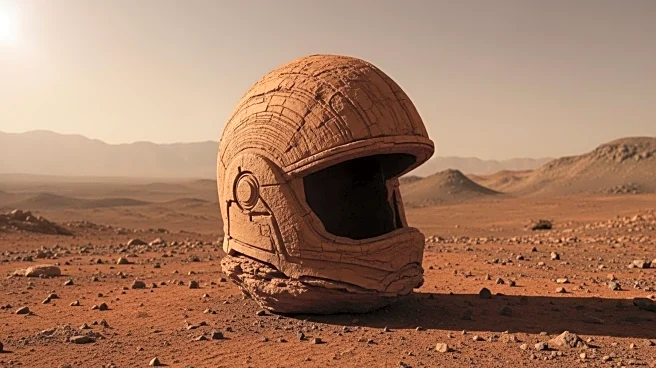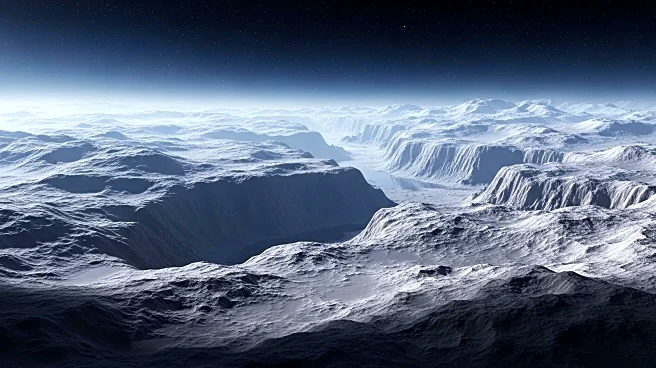What's Happening?
NASA's Perseverance rover has captured images of large, wind-carved sand formations known as 'megaripples' on Mars. These formations were observed at a site called Kerrlaguna on August 13, 2025. Megaripples are sandy ridges that rise up to about three feet high and are found across much of the Martian surface. They are considered 'inactive,' meaning they haven't visibly shifted in recent years. The rover's exploration aims to understand how Martian winds shape the landscape, providing insights into Mars' modern environment. The megaripples are remnants from a time when Mars had a thicker atmosphere and stronger winds, indicating possible climate shifts over millions of years.
Why It's Important?
The discovery of megaripples by Perseverance is significant as it provides clues about Mars' climatic history and current environmental conditions. Understanding these formations can help scientists learn about the planet's past interactions with water and atmospheric changes. This knowledge is crucial for future human missions to Mars, as it may reveal resources within Martian soils that could support human survival. The study of these formations also challenges the notion that Mars is geologically inactive, showing that the Martian surface continues to evolve, albeit slowly.
What's Next?
Perseverance is expected to continue its exploration southward to a larger field of megaripples at a site called 'Lac de Charmes.' NASA plans a more in-depth campaign at this location to further study the Martian environment. The rover will use its scientific instruments to analyze the chemistry and structure of rock and soil, which could provide more insights into Mars' geological history and potential resources for future missions.
Beyond the Headlines
The study of Martian megaripples not only enhances our understanding of Mars but also contributes to the broader field of planetary science. By comparing these formations with similar features on Earth, scientists can gain insights into the processes that shape planetary surfaces across the solar system. This research also highlights the importance of robotic exploration in preparing for human missions to other planets.
